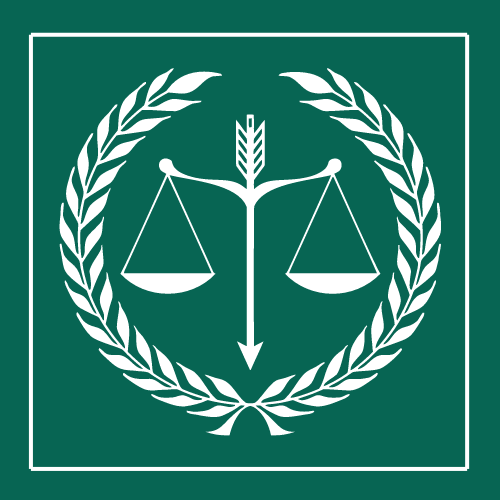Navigating the tricky landscape of OSHA regulations can be a daunting task for any employer. At BruegelPC, we understand the stress and confusion that can arise when faced with allegations of employee misconduct. With our expertise in defending against OSHA violations, we are here to ensure that your rights are protected and your business remains compliant. If you’ve been confronted with an OSHA citation, trust us to provide the skilled and knowledgeable defense you need.
As demonstrated by OSHA, an employer can use employee misconduct as a defense if they prove the misconduct was against a well-communicated and enforced company rule, the employee was trained on the rule, and steps were taken to discover violations. This defense requires documented evidence showing consistent enforcement and training efforts.
Introduction to OSHA Employee Misconduct Defense
Introduction to OSHA Employee Misconduct Defense reveals that employers can avoid liability if they prove the employee’s misconduct was unforeseeable and that proper safety protocols were in place.
In concise terms, employers need to know their duties to keep the workplace safe and healthy for their workers.
If a worker breaks safety or health rules, employers should be ready to show they’ve tried to stop this. This means giving training, setting safety rules, and keeping good records.
Employers must deal with any worker rule-breaking quickly and fairly, making sure to follow the right steps. When it comes down to it, this might include looking into the issue, collecting proof, and taking action if needed.
Employers also need to understand their role when OSHA comes for inspections. It’s important to work with OSHA officials but also protect the business’s interests.
In short, knowing OSHA rules well and staying ahead on safety measures helps employers handle any issues with worker safety and health rules.
Understanding OSHA Regulations and Penalties
OSHA regulations, enforced since 1971, have helped reduce workplace fatalities by over 65%.
Predominantly, they handle things like giving safety gear, proper training, and keeping workspaces clean. If a company doesn’t follow these rules, they might get fines or even be shut down.
By definition, employers need to know and follow OSHA rules to keep workers safe and avoid legal issues.
Steps to Prove Employee Misconduct Defense
As we’ve established previously, gather emails, witness statements, and documents to lay the groundwork for proving employee misconduct defense.
Essentially speaking, first, check the company’s rules to make sure they were followed. Then, look into what happened to find out the truth. Let the employee explain their side and think about any reasons that might excuse their behavior. Keep good records of everything, as they are important for backing up your case. If needed, ask HR or a lawyer for help to follow all the laws.
You know, share your findings with the right people in the company and be ready to take action if the employee did something wrong. Treat everyone equally and fairly during the whole process. Finally, tell the employee the result clearly and professionally, keeping the details private while protecting the company’s interests.
Common Pitfalls in OSHA Investigations

Improving our past conclusions, a critical pitfall in OSHA investigations arises when workplace incidents are poorly documented, such as failing to record injuries or maintain thorough safety records.
Honestly, if you don’t fully cooperate with OSHA inspectors or don’t give them the information they need, it can make their investigation harder.
Not giving your employees enough training on safety rules can also cause problems. They might miss important safety issues during an OSHA inspection. Employers need to teach their workers the importance of following safety rules and to report any potential dangers to help prevent accidents.
Another common mistake is not fixing safety problems quickly. As a rule, ignoring OSHA warnings or delays in fixing issues can lead to bigger penalties and more trouble for the company.
Poor communication with OSHA inspectors can also cause misunderstandings or slow down the investigation. Employers should address any concerns or questions inspectors have to ensure the process goes smoothly.
Effective Legal Strategies for Defense
Going back to earlier points, establishing a well-crafted defense strategy can significantly increase the chances of acquittal or reduced penalties in criminal trials.
At the base, one good way to defend yourself legally is by looking into every detail of your case and collecting evidence to back up your side. This means going through what witnesses have said, checking out any physical evidence, and talking to experts if needed.
Another vital part of a strong defense is to understand the laws related to your case. Knowing these laws can help you spot any weak points in the prosecutor’s arguments and create your own points to challenge them. Broadly speaking, having a skilled defense lawyer is also very important. A good lawyer can guide you on your rights, talk to the prosecutors, and stand up for you in court if needed. Getting a lawyer early on can help you build a strong defense right from the start.
In short, a solid defense means being active, detailed, and strategic. By carefully investigating your case, knowing the laws, and getting a good lawyer, you can improve your chances of a good outcome in court.
My Final Perspective
Referencing previous discussions in order to successfully defend against OSHA employee misconduct allegations, employers must prioritize compliance with safety regulations, provide thorough training to employees, maintain accurate records, and promptly address any safety concerns.
What BruegelPC is suggesting to look at is, by taking proactive steps to create a culture of safety and accountability in the workplace, companies can avoid costly penalties and protect their employees from harm.
References
- “Employee Rights and Employer Wrongs” by Barbara Kate Repa, Nolo
- “Employment Law Essentials: Your A to Z Guide to HR Compliance” by Lisa Guerin and Sachi Barreiro, Nolo
- “The Employer’s Legal Handbook” by Fred S. Steingold, Nolo

